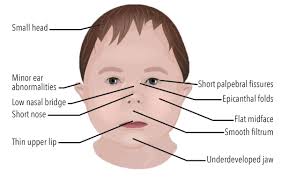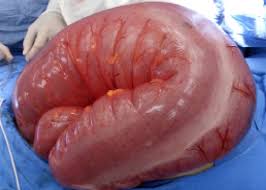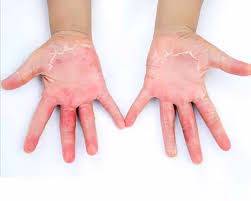Explore Our Medical Dictionary: A Resource for Patients and Healthcare Professionals
Clostridium botulinum is a bacterium that produces botulinum toxin, one of the most potent toxins known to humans. This bacterium is commonly found in soil, dust, and water, and it can also survive and multiply in improperly preserved or canned foods, especially low-acid foods such as vegetables and meats. When ingested, the botulinum toxin can cause botulism, a rare but serious illness characterized by muscle paralysis and potentially fatal respiratory failure.
Infants under one year old are particularly vulnerable to botulism because their digestive systems are not fully developed, and they lack the beneficial bacteria that can protect against the growth of Clostridium botulinum. Therefore, it’s crucial to avoid giving infants honey or any products containing honey, as it can contain spores of Clostridium botulinum that may lead to botulism poisoning.
Botulism poisoning in infants can result in symptoms such as constipation, weakness, difficulty feeding, and respiratory distress. Prompt medical treatment is essential if botulism is suspected, as the illness can be life-threatening if left untreated. To prevent botulism, it’s important to follow safe food handling and storage practices, avoid giving honey to infants under one year old, and seek medical attention if any symptoms of botulism develop
Fetal Alcohol Syndrome (FAS) is a serious and preventable birth defect caused by maternal alcohol consumption during pregnancy. It encompasses a range of physical, cognitive, and behavioral abnormalities in newborns, resulting from prenatal exposure to alcohol. Here are some key aspects of Fetal Alcohol Syndrome:
- Children with FAS may exhibit distinct facial abnormalities, including smooth philtrum (the groove between the nose and upper lip), thin upper lip, and small eye openings. They may also have growth deficiencies, such as low birth weight, short stature, and small head circumference.
- Prenatal alcohol exposure can lead to structural and functional abnormalities in the developing brain, resulting in neurological impairments. Children with FAS may experience developmental delays, learning disabilities, intellectual disability, and poor coordination.
- FAS can manifest in behavioral problems, including hyperactivity, impulsivity, attention deficits, and difficulties with social interaction and adaptive behavior. Cognitive impairments may affect reasoning, memory, problem-solving skills, and academic performance.
- Individuals with FAS are at increased risk of various health problems, such as heart defects, kidney abnormalities, vision or hearing impairments, and immune system disorders. They may also be prone to mental health issues, including anxiety, depression, and substance abuse later in life.
- Fetal Alcohol Syndrome is a lifelong condition that can have significant implications for affected individuals and their families. It is entirely preventable by abstaining from alcohol consumption during pregnancy. It is crucial for pregnant women and those planning to conceive to avoid alcohol entirely to prevent the risk of FAS and other alcohol-related birth defects.
-
Early identification and intervention are critical for children with FAS to address developmental delays, cognitive impairments, and behavioral issues. Access to comprehensive medical care, educational support, and specialized services can help mitigate the impact of FAS and improve outcomes for affected individuals.
Megacolon is a medical condition where the large intestine (colon) becomes abnormally enlarged. This can happen due to various reasons, such as chronic constipation, nerve damage, or certain diseases like Hirschsprung’s disease. When the colon becomes overly stretched, it may not be able to contract properly to push stool through, leading to symptoms like severe constipation, abdominal pain, bloating, and vomiting. Treatment often involves medications, dietary changes, and in severe cases, surgery to remove the affected portion of the colon.
Rhabdomyolysis is a serious medical condition where damaged muscle tissue breaks down rapidly and releases harmful substances into the bloodstream. This breakdown can be caused by various factors such as extreme physical exertion, traumatic injury, or certain medications or toxins. When muscles break down, they release substances that can damage the kidneys and cause severe complications. Symptoms of rhabdomyolysis may include muscle pain, weakness, dark urine, and in severe cases, kidney failure. Treatment typically involves intravenous fluids to help flush out the harmful substances and support kidney function, along with addressing the underlying cause of muscle damage.
In the context of infant behavior, “rooting” refers to a reflex that newborn babies exhibit when they are seeking to feed. This reflex is present from birth and typically disappears after a few months. The rooting reflex is an automatic response to touch, especially around the mouth and cheek area.
When a baby’s cheek or mouth is gently touched or stroked, the baby will turn their head in the direction of the stimulus, open their mouth, and make sucking motions. This reflex helps the baby locate the source of nourishment, usually the mother’s breast or a bottle, facilitating feeding.
The rooting reflex is one of the many instinctive behaviors that newborns display to ensure their basic needs, such as feeding, are met. As the baby grows and becomes more coordinated, other feeding-related reflexes and voluntary actions gradually replace the rooting reflex.
Sjögren’s syndrome is a chronic autoimmune disorder characterized by inflammation primarily affecting the moisture-producing glands in the body, leading to symptoms of dryness in the eyes and mouth. It is named after Dr. Henrik Sjögren, who first described the condition in the early 20th century. In Sjögren’s syndrome, the immune system mistakenly attacks the body’s own tissues, particularly the salivary glands and tear glands (lacrimal glands), causing reduced production of saliva and tears. This results in dry eyes (xerophthalmia) and dry mouth (xerostomia), along with other systemic symptoms that can affect various organs and systems in the body. Treatment aims to alleviate symptoms, manage inflammation, and prevent complications.
Toxic shock syndrome (TSS) is a rare but potentially life-threatening condition caused by certain types of bacteria, notably Staphylococcus aureus and Streptococcus pyogenes. It can occur when these bacteria release toxins into the bloodstream, triggering a severe immune system response. TSS can affect men, women, and children, but it is often associated with menstruating women who use tampons, as well as individuals with skin wounds or recent surgery. Symptoms of toxic shock syndrome include sudden high fever, low blood pressure, rash resembling sunburn, vomiting, diarrhea, muscle aches, confusion, and even organ failure. If left untreated, TSS can be fatal. Treatment typically involves hospitalization and administration of antibiotics and supportive care to manage symptoms and prevent complications. It’s crucial to seek medical attention immediately if you suspect toxic shock syndrome.








